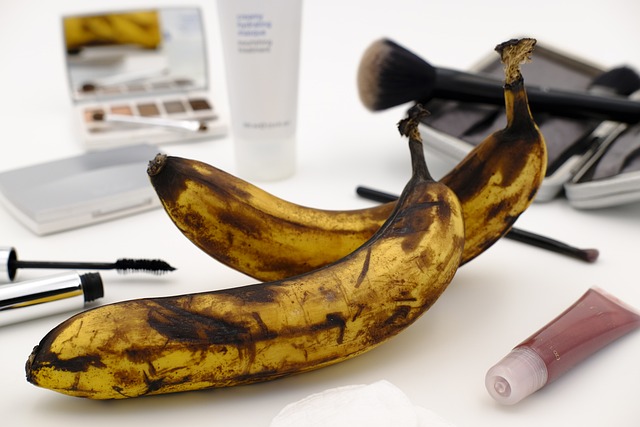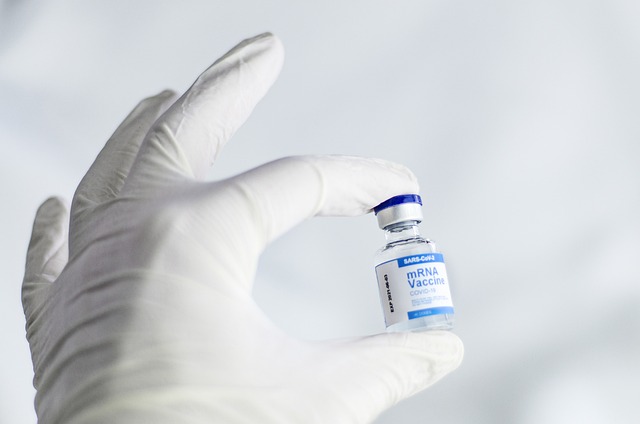Anti-aging wrinkle treatments empower individuals to combat signs of aging skin through diverse options, from topical creams and serums rich in retinol, hyaluronic acid, and peptides, to in-clinic procedures like Botox, chemical peels, and laser therapies. Non-invasive techniques such as microneedling and plasma therapy offer gentle alternatives with minimal downtime. A holistic approach combining lifestyle changes like adequate sleep, diet, hydration, and exercise further supports healthy skin aging. Consulting a dermatologist is crucial for personalizing treatments based on unique skin needs and achieving long-lasting results.
Looking for long-lasting wrinkle reduction solutions? Understanding the science behind wrinkles is the first step towards achieving smoother, younger-looking skin. From topical creams and serums to in-clinic procedures and non-invasive techniques, this guide explores diverse anti-aging wrinkle treatments.
We dissect the latest research on what really works, debunk common myths, and provide insights into choosing the right treatment plan based on your skin’s unique needs. Discover how to support healthy skin aging through lifestyle changes and emerge with a comprehensive understanding of anti-aging wrinkle treatments.
Understanding the Science Behind Wrinkles

Wrinkles are a natural part of aging, but understanding their formation can empower us to choose effective anti-aging wrinkle treatments. The skin’s top layer, known as the epidermis, is responsible for its elasticity and smoothness. Over time, various factors contribute to the breakdown of this structure. UV radiation from the sun is a significant culprit, causing collagen and elastin fibers to break down, leading to fine lines and wrinkles. Environmental pollutants and certain lifestyle choices, such as smoking, can also accelerate this process.
Our skin’s ability to regenerate slows down with age, making it harder for it to repair damage and maintain its youthful appearance. Anti-aging wrinkle treatments aim to combat these effects by stimulating collagen production, protecting the skin from further damage, and improving overall skin texture. These strategies often include a combination of topical creams, skincare routines, and sometimes even medical procedures, all designed to offer long-lasting wrinkle reduction results.
Types of Anti-Aging Wrinkle Treatments

Anti-aging wrinkle treatments have evolved significantly, offering a range of options to combat the signs of aging skin. One popular approach involves topical applications of retinoids, derivatives of vitamin A, which stimulate collagen production and help smooth fine lines and wrinkles. These powerful ingredients are often found in serums and creams designed for nightly use, allowing the skin to repair and rejuvenate during sleep.
Another effective method is chemical peeling, where specialized chemicals are applied to the skin to remove dead cells and encourage new skin growth. This process can be customized to target specific concerns, such as hyperpigmentation or deep wrinkles. Moreover, non-invasive procedures like microdermabrasion and plasma treatments have gained popularity for their ability to gently exfoliate and revitalize the skin while minimizing downtime.
The Efficacy of Topical Creams and Serums

Many people turn to topical creams and serums as their go-to anti-aging wrinkle treatments, and for good reason. These potent formulations are designed to penetrate deep into the skin, targeting specific concerns like fine lines, wrinkles, and loss of elasticity. Active ingredients such as retinol, hyaluronic acid, and peptides have been shown to deliver significant results in reducing the appearance of aging.
Regular use of these products can help stimulate collagen production, hydrate the skin, and improve overall texture. Moreover, some advanced formulations incorporate sun protection factors (SPF), which are essential for preventing further damage from environmental stressors—a key factor in accelerated skin aging. The effectiveness of topical creams and serums lies not only in their ability to provide immediate results but also in their contribution to long-lasting, healthy-looking skin.
In-Clinic Procedures for Long-Lasting Results

For long-lasting wrinkle reduction, in-clinic procedures offer a range of effective anti-aging treatments. These advanced techniques are administered by trained professionals in controlled settings, ensuring optimal results. One popular method involves the use of injectables, such as Botox or filler, to smoothen fine lines and wrinkles from the surface. These substances temporarily paralyze facial muscles, reducing dynamic wrinkle formation, and provide immediate yet temporary relief.
Another powerful in-clinic treatment is chemical peels, which utilize specific chemicals to exfoliate the skin, removing damaged layers and stimulating collagen production. Laser treatments are also highly effective, targeting specific wavelengths of light to break up pigment and improve skin texture. These procedures not only provide instant results but also offer long-term benefits by addressing various signs of aging simultaneously.
Non-Invasive Techniques: A Gentle Approach

Non-invasive techniques have emerged as a preferred choice in the realm of anti-aging wrinkle treatments, offering a gentle and effective approach to skincare. These methods provide an alternative to more aggressive procedures, ensuring minimal downtime and discomfort while still delivering remarkable results. By utilizing advanced technologies and natural ingredients, dermatologists can now target specific areas of concern without causing any significant disruption to the skin’s surface.
One such technique is the application of topical creams and serums containing powerful anti-aging agents. These formulations penetrate deep into the skin, stimulating collagen production and enhancing its elasticity. Additionally, non-invasive procedures like microneedling and plasma treatments have gained popularity. Microneedling involves creating tiny pricks in the skin to trigger a healing response, resulting in smoother and more youthful-looking skin. Plasma therapy, on the other hand, utilizes the patient’s own blood to stimulate growth factors, effectively reducing fine lines and wrinkles.
Lifestyle Changes to Support Healthy Skin Aging

As we age, our skin undergoes natural changes that can lead to wrinkles and fine lines. However, adopting a holistic approach through lifestyle changes can significantly support healthy skin aging alongside regular anti-aging wrinkle treatments. Adequate sleep is key; aiming for 7-9 hours each night allows your skin to repair and regenerate, reducing the appearance of wrinkles over time. A balanced diet rich in antioxidants from fruits and vegetables nourishes the skin, promoting elasticity and a youthful glow. Staying hydrated by drinking enough water also plumps the skin, giving it a more radiant and firm look.
Additionally, regular exercise boosts blood circulation, enhancing oxygen and nutrient delivery to the skin cells. This stimulates collagen production, which is essential for maintaining skin firmness and reducing the depth of wrinkles. Protecting your skin from sun damage is another critical aspect; wearing sunscreen daily helps prevent UV rays from breaking down skin structures, a leading cause of premature aging. These lifestyle adjustments, combined with effective anti-aging wrinkle treatments, can contribute to long-lasting reduction in wrinkles, ensuring your skin looks and feels its best as you age gracefully.
Common Myths and Misconceptions Debunked

Many individuals seeking effective anti-aging wrinkle treatments often encounter a plethora of misinformation and unproven claims. It’s crucial to separate fact from fiction when considering various skincare routines and procedures. One common myth is that certain products or techniques can offer instant, permanent solutions to wrinkles. The truth is, while some methods may provide immediate results, sustained smoothness requires consistent effort and the right combination of treatments.
Another misconception is that specific ingredients or topicals can target all types of wrinkles in one go. Different anti-aging wrinkle treatments cater to various concerns—from fine lines to deep furrows. It’s essential to identify and address individual skin needs. Skilled dermatologists can guide you through personalized routines, including chemical peels, collagen stimulators, and targeted creams, ensuring long-lasting reduction without the hype of quick fixes.
Choosing the Right Treatment Plan

When it comes to achieving long-lasting wrinkle reduction, selecting the perfect treatment plan is paramount. Every individual’s skin is unique, and what works for one person might not yield the same results for another. That’s why consulting a dermatologist or skincare expert is crucial; they can assess your specific needs and recommend tailored anti-aging wrinkle treatments.
The key to successful wrinkle reduction lies in understanding your skin type and the root causes of wrinkles. Is it environmental factors, aging, or lifestyle choices? Different anti-aging wrinkle treatments target these issues variably. Some focus on boosting collagen production, others hydrate and nourish the skin, while yet more address specific concerns like fine lines or deep wrinkles. Choosing a treatment that aligns with your goals and skin’s needs ensures optimal results over the long term.
